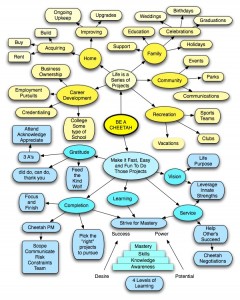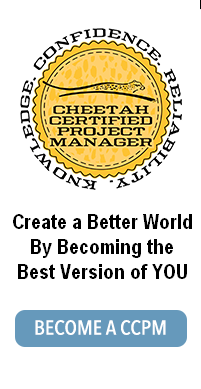As a PMP® and project manager, I see volunteerism as the perfect win-win. You get to stretch your wings and grow in a low-risk environment, gain experience that is relevant in the private sector, network and meet new people, and give back to a cause that you care about.
The non-profit organization you’re helping gets your time, expertise and passion for contributing. You get to show the time-tested Project Management techniques that can have a lasting impact on the organization. From establishing project agreements at the beginning of a project to capturing lessons learned at the end, basic Project Management approaches can make a big difference to any organization.
For you, it’s an accessible and inexpensive way to grow personally and professionally. For the non-profit, it’s a way to make the organization more efficient and effective without paying a consultant.
So, let’s get started. Here are ten steps to follow as you volunteer, grow your career and help an organization benefit from Project Management.
1. Choose an organization that connects to your personal passions or interests. Are you a political junkie who gets energized by the campaigns or a home improvement nut who loves to do one project after another? If politics is your passion, campaigns at the local and national level are always looking for volunteers. Home improvement zealots and those handy with a hammer can get involved with organizations like Habitat for Humanity. Whatever organization you choose, make sure it’s something that energizes you and fulfills you in a way that money doesn’t. Think of this as a virtual paycheck that your soul cashes.
2. Match your skills to their needs. Do your homework before you volunteer. Call the organization you’re interested in and find out what kinds of needs it has. If a web master recently left, and you’re an Internet hobbyist or professional, you could use your skills to have a real impact on the web presence.
3. Present yourself professionally. Don’t go into a non-profit and act like they should be lucky to have you. Instead, treat it like a job interview and prepare yourself beforehand. Know what your goals are that you want to achieve working with them, and position yourself to fulfill those goals for them.
4. Use your volunteerism as a resume builder. Is there a hole in your resume that has held you back? Maybe your boss thinks your leadership skills need some work, or maybe you have a weakness when it comes to managing budgets? Whatever your soft spot is, use your volunteerism to strengthen it and gain more experience. Also, use your volunteerism as a talking point in an interview. What you choose to do in your personal time says a lot about you to a prospective employer.
5. Create new relationships that expand your network. Don’t you just love it when people tell you to get out there and network? They make it sound like there’s a special park you can go to and just walk out there and network. Simple, right? In my experience as a business owner, networking comes from building relationships. It doesn’t happen by just walking into a room and making a dive for the coffee bar. It happens when people know you, trust you and get a sense of who you are — which is exactly what can happen in a non-profit where you are volunteering with other people who share a similar interest.
6. Spread your wings in a safe environment. Do you have a secret penchant for marketing but are afraid to explore it at work because you’ve never done it before? In our jobs, it’s easy to get cast in a department for life, but as a volunteer, you can become the star marketer and write the monthly newsletter or a feature article on the newest member of the Board of Directors. If you have a secret dream to cross departments or shift your skill set, a volunteer position is the perfect place to spread your wings and test your dream.
7. Assess the opportunity for a high-visibility project. Is there a project that is critical to the organization and that will offer exposure to the Board members of the non-profit? If there is, first assess the risk. You don’t want to choose a project that is so high risk that your volunteerism could back fire on you. Instead, look for an opportunity where you can showcase your skills and talent, and let leaders of the organization see you strut your stuff.
8. See where you can have the most impact. After you’ve worked at an organization for a while, you can begin to see their Achilles heel and where you might be able to help the most. For example, maybe you’ll see that they don’t have a consistent way of approaching projects or capturing lessons learned. If you can offer ways for them to incorporate some basic Project Management methodologies, the impact could be felt long after you’ve moved on to your next adventure.
9. Go to the annual event or fundraiser. If the organization has an annual gala or fundraiser, make sure you make it there. It shows you’re committed to the organization and gives you an opportunity to meet people at all levels of the non-profit. Doing the funky chicken with the Executive Director is something that will be remembered!
10. Service with a smile. Dr. Martin Luther King, Jr. said: “Everyone can be great, because everyone can serve.” This is an opportunity for you to serve and have fun at the same time. Savor the lessons and bring them along with you wherever your journey takes you.





